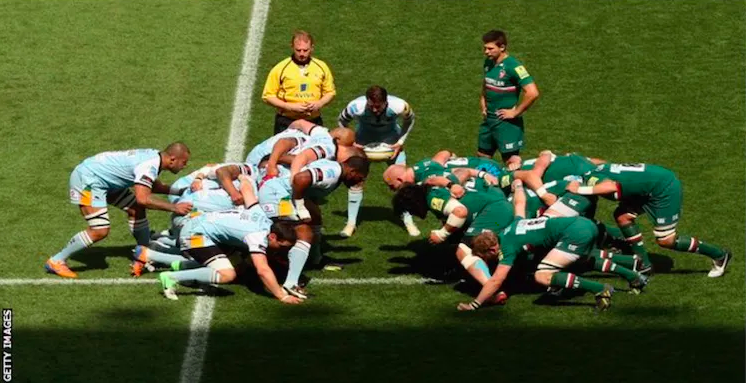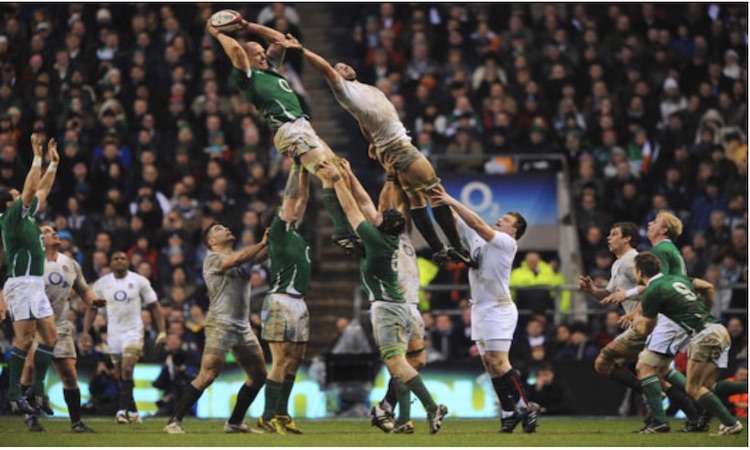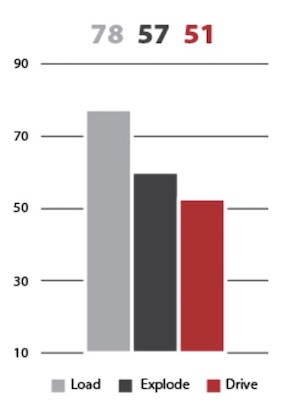
This week continues our series of guest posts with Tom Tombleson, the strength and conditioning coach for England Rugby
Ask 99 rugby players what their top two favorite strength training movements are; 70 of them will say bench press & back squat. Narrow that down to the Front-Row Forwards and I’d expect all 99 to say those two popular exercises. These exercises could be selected due to sport-based cultural influences, habit, or valid performance improvement. With insight from the Sparta Scan I spent the last year correlating front row forward performance and Sparta signature changes. What I found is that these two tried and tested movements significantly influence unhealthy signatures for these players. What I’m suggesting is radical (for Rugby) and will be met with a healthy amount of skepticism, but I believe bench press and squat should be eliminated from a prop and hookers training program.
The Front Row players’ most pivotal role are the set pieces, which include the scrum & line-out. The front 3 have the most demanding role in the scrum, which is essentially an 8 man shove (led by the two two props and one hooker ) against the opposing pack of 8 men competing for a ball fed between the two packs. The line-out is a way to restart the game after the ball has gone out of bounds and involves the front row players lifting a Lock-Forward into the air to compete for a thrown ball.

In both set-piece situations the front row crouch down and resist, push, and hold against the opposition as well as squat down and lift overhead in the line-out. Traditional logic would say that being strong in these positions (squat and press) would help these athletes excel at the demands of their sport position. Therefore, training these exact positions with a back squat is the best way to be a better Front Rower in rugby. But this simple reasoning doesn’t do justice to the entire game of rugby which also requires running 7+ km a game, severe changes of direction and ball carrying which requires large degrees of multi-directional athleticism along with the specialization required in the set piece.

The first round of Sparta Scans of 22 front row players (all from the senior playing squad) revealed that all but one had Signatures that were characterized by Extreme LOAD. Remember, a signature is considered extreme when the t score for one variable is 15 or more greater the the next closest variable, putting the athlete at risk for injury. When you think about what LOAD represents (eccentric rate of force development) and the exercises that improve this variable (squats, anterior chain movements) it stand to reason. In a typical training week a front row forward could perform as many as 20-25 scrums as well as up to 20 scrums in a match with an average time under tension of 4-6 seconds. If you add more of this movement pattern on top of those all those reps by including back squat in these players training programs then you are almost assuring that they will have an extreme signature.

After observing the results of the initial scans my job was to help these athletes remedy their extreme signatures, stay healthy and available for selection to competitions. At the same time I wanted to help these athletes excel at their position, so I didn’t want to change their signatures so much that they lost competitive advantage at the skills their sport demands. An ideal Sparta Signature for a front row forward would be a Lateral Signature, where DRIVE is lowest of the three variables, but no one variable is extreme.
Asking these athletes to give up squatting in their program was like asking them to play with one leg, they were afraid to give up the heavy loads and feel weak on the field. We replaced squat with heavy split squats (to improve DRIVE) and dead lifts (to improve EXPLODE) based on the athletes body weight. Trust me when I say that split squats at 120% and dead lift at 200% of body weight for a 120kg player will humble even the best squatter. By identifying the amount of squats this population was already performing (on the field) and identifying overspecialization using the Sparta Scan, we were able to challenge a trend and improve on-field performance and reduce injury risk for these players.
Tom Tombleson has joined the England Rugby strength and conditioning staff after a 5 year stint with the NSW Waratahs which culminated in a Super 15 title. Tombleson is a former wing who represented Newbury, Oxford University and England Sevens – as well as Sydney-based side Randwick at first-grade level.